MARTIAL ARTS COMPENDIUM
Part I
WADO-KAI KARATE
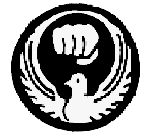
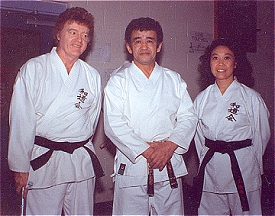
The Hillmans pose with Sensei Shintani
~ Head of Wado Kai karate for North America ~
Following their Shodan Black Belt presentations
![]()

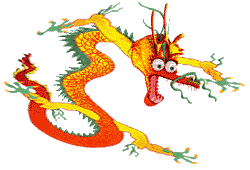

![]()
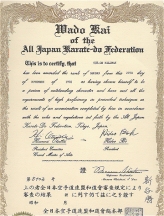
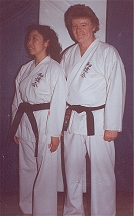
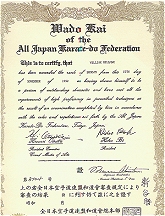
![]()


![]()



![]()



![]()
Hillmans working toward the black
belt level
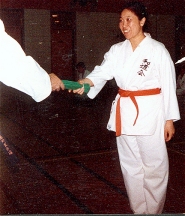
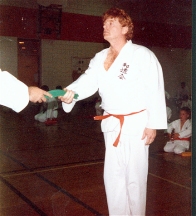
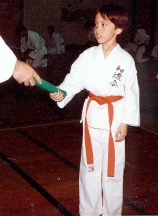
|
Bill Hillman's Telecaster Journals http://home.westman.wave.ca/~hillmans/telshort.html Journal ramblings on the way to a Black Belt TAKE IT TO THE LIMIT What am I doing here? We have been on the dojo floor for three hours without a break - 80 aching, sweat-drenched bodies of ages ranging from six years to a "you'd think he'd know better and act his age and stay in his rocker on the front porch" 48. We have stretched, kicked, punched, blocked, leaped, run, rolled, and have driven our bodies to the limit. Now in a state of fatigue I realize that, as must my fellow karatekas, I have to dig a little deeper to pull out another spark of inner strength to keep going. Ahead lies two more hours - the most important two hours - in which we must drive our over-taxed bodies through kata and kumite. Three of my kin share this experience with me. Sons Ja-On and Robin are working at earning another stripe toward their Blue Belts, and my partner-in-life, Sue-On, is my partner in today's gauntlet run for this grading's top honour - a Brown Belt.
|
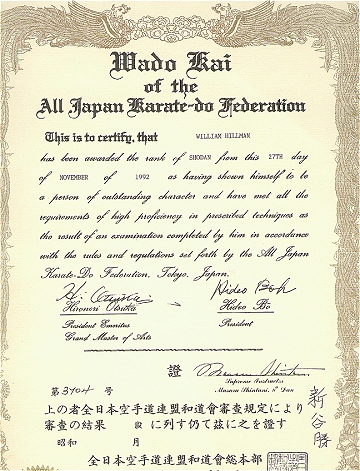
Gung Hei
Fat Choy
Happy
New Year
Contact Local
Manitoba (Virden) Sensei
Virden Wado
Kai Karate Club
Bruce Dunning,
Yodan
www.wado-ryu.org
Wado
Karate eGroups Newsletter
Bill
Hillman's Telecaster Journals
![]()
OTHER MARTIAL ARTS
and ASIAN CULTURE LINKS
Academy
of European Medieval Martial Arts: AEMMA
Get
your name translated into Chinese for FREE!
Waves of Hope: Dragon
Boat Team
Hillman
Chinese Culture Reference Page

Wado-Ryu
Karate Links
Taoism
and the Philosophy of Tai Chi Chuan
The Taoist
Restoration Society
A nonprofit organization helping to preserve
and restore China's Taoist heritage.
Qi-Gong
[chee gong]
is a part of the tradition of Chinese medicine.
It is a practise which incorporates
breathing, posture, movements and meditation.
These techniques are easy to learn and are
designed to
enhance your energy and sense of well-being.
International
Qi-Gong Association
![]() WEBMASTER:
BILL HILLMAN
WEBMASTER:
BILL HILLMAN ![]()
Bill
and Sue-On Hillman Eclectic Studio
Copyright 1996-2006/2017
Bill & Sue-On Hillman